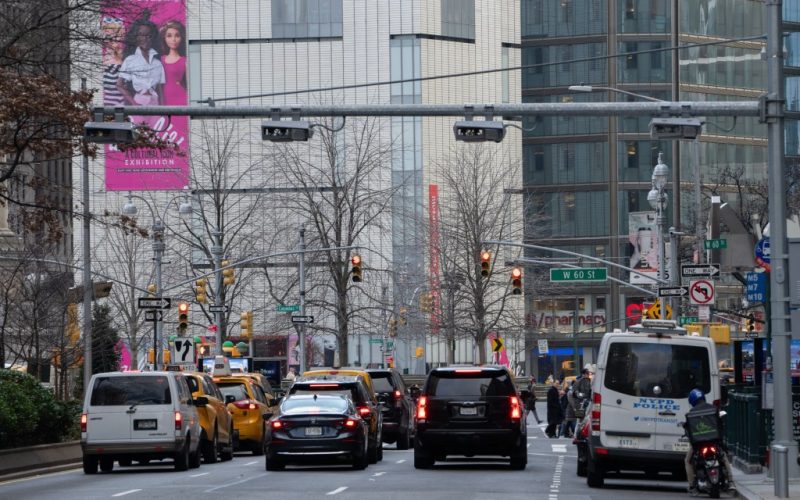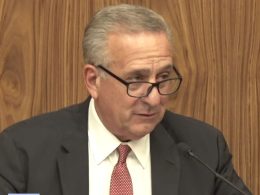Traffic in Midtown and lower Manhattan was down nearly 8% after the first full week of congestion tolling, according to preliminary traffic data released Monday by the MTA.
“It has been a very good week here in New York,” said Juliette Michaelson, MTA’s deputy chief of policy and external relations and a chief architect of the agency’s congestion pricing plan. “Just look out the window — there’s less traffic, quieter streets, and I think everybody’s seen it.”
While anecdotal evidence has abounded in the nine days since New York started charging drivers to drive on Manhattan’s surface streets at or below 60th St., Monday marks the first time the MTA has released data obtained by the tolling network.
According to the data collected last week, 499,016 vehicles entered the congestion tolling zone last Monday, the first weekday since tolling began. Those numbers steadily rose through the work week, with 561,604 vehicles entering the zone on Friday.
On average, that’s 539,217 vehicles a day — 7.5% fewer vehicles than the agency said would typically enter during a work week in January.
“These are significantly lower volumes than we would have expected without the program,” Michaelson said.
For those who do drive — or ride on the MTA’s buses — the data shows that the reduction in crossings has had a sizable impact on most commute times.
Comparing last Wednesday to an average Wednesday in January 2024, travel times improved across the board at all river crossings in the congestion zone.
A drive into Manhattan through the Lincoln Tunnel Wednesday was 39% faster than last January, according to the data. The Queens-Midtown Tunnel sped up 39%, and the Brooklyn Bridge sped up 28%. The smallest improvement was at the Manhattan Bridge — which still had 10% faster travel times than in January last year.
“For one day of data, to see such consistently high trip-time reductions is just very, very significant,” Michaelson said.
Similarly, east-west streets across the congestion zone saw speeds increase. With the exception of westbound traffic on 42nd St. and 23rd St., crosstown traffic times fell between 6% and 36%.
North-south travel times remained largely the same, however. Traffic on Third Ave. and Eighth Ave. sped up by more than 20%, but Second, Fifth and Ninth Aves. saw 1% longer travel times.
Michaelson and other MTA officials emphasized that the data is preliminary, and that the travel time data in particular is based on just one day of congestion pricing.
“This is still preliminary data,” Michaelson said. “Travel patterns, we expect, will change.”
The MTA has not yet crunched the numbers on what the data means for tolling revenue — an income stream that is meant to back $15 billion in bonds to fund some of the agency’s biggest expansion and repair projects.
John McCarthy, MTA’s head of policy and external relations, told reporters to expect early revenue revenue data in “weeks, not months.”
The data comes as members of New York’s Republican delegation traveled to Mar-a-Lago over the weekend and reportedly discussed plans to kill the congestion toll with President Elect Donald Trump.
Trump has been a longtime opponent of the plan, and vowed early in his presidential run to undo it if elected — though it remains unclear what legal paths he would have to up-end a toll that’s administered by the state and has already been approved by federal regulators.
Asked about Trump’s threat prior to the MTA’s Monday data release, Mayor Adams said he wanted more information, and didn’t want to “throw more hysteria into this law of the land.”
“If the president decides an action such as that, I don’t control it,” he said.








